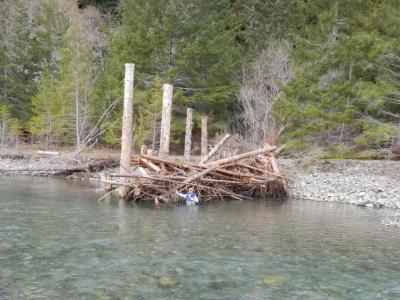Modeling Salmonid Habitat for Restoration
Session Coordinator:
James Graham, Humboldt State University
The session will focus on presenting modeling methods available for habitat modeling, and applications of modeling to specific areas for restoration. This would focus on modeling the environmental and anthropomorphic elements that affect salmonid habitat including: topography, hydraulic dynamics, bottom composition, shading, and aquatic temperature. This session would bring together examples of the wide variety of methods available. A panel at the end of the session would discuss steps forward.
Integrating Hydraulic Modeling-Based Simulations of Salmonid Habitat Suitability with Geomorphic, Hydrologic, and Fisheries Data for Restoration Prioritization, Russian River Watershed, CA
Jeremy Kobor, MS, PG #9501, Senior Hydrologist, O’Connor Environmental, Inc.,
Increasing the Availability of Spawning Habitats through Building Base Flow Patterns as Found in Natural Flow Regimes
Damon Goodman, US Fish and Wildlife Service
A Streamlined Monitoring Approach Quantifying Existing Habitat Conditions and Guiding Restoration
Brian Cluer, NOAA Fisheries
Modeling Stream Temperatures with the Inclusion of Irradiance Change Due to Forest Biomass Shifts
Jonathan James Halama, PhD, ORISE Fellow with Environmental Protection Agency
What’s in a Number: Southern Steelhead Population Viability Criteria?
Mark Capelli, PhD, Steelhead Recovery Coordinator, Southwest Fisheries Center, NOAA Fisheries
Flow, Form, and Function: Integrated Hydro-geomorphic Modeling Reveals Opportunities and Trade-offs for River Restoration
Belize Lane, PhD, Utah State University

